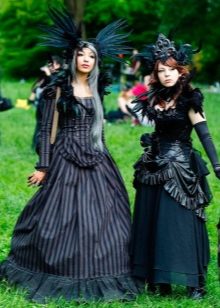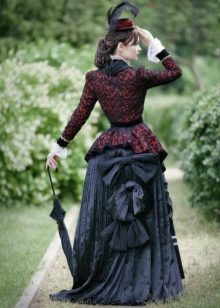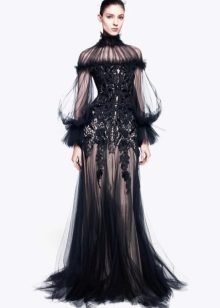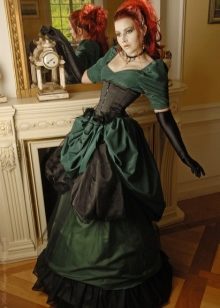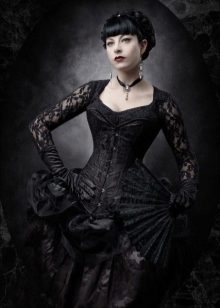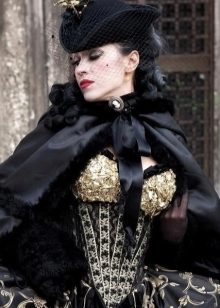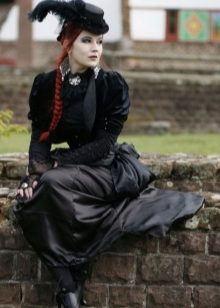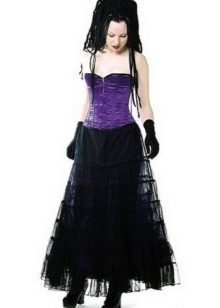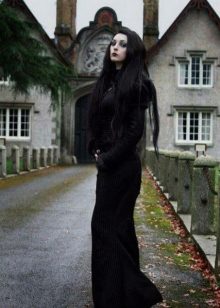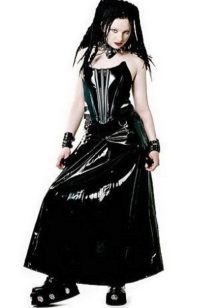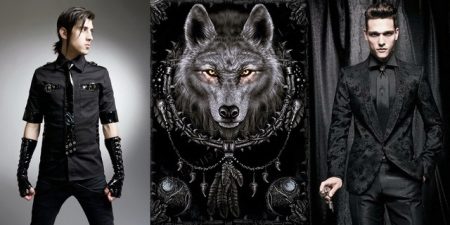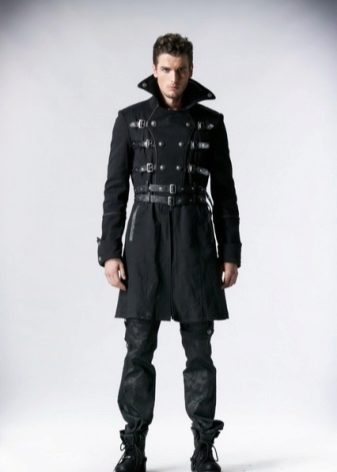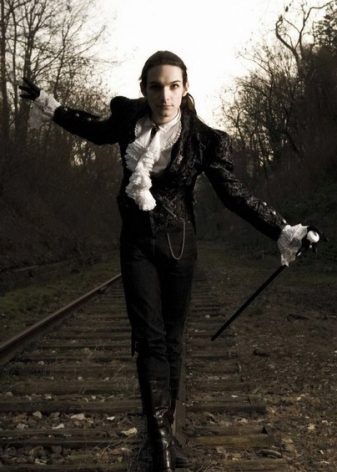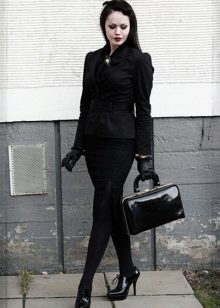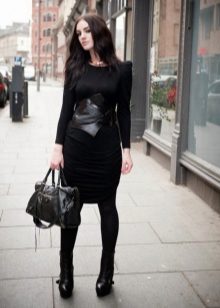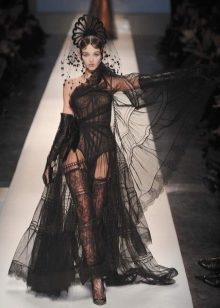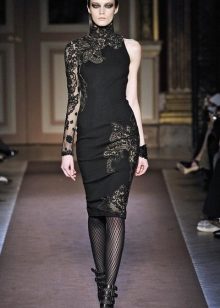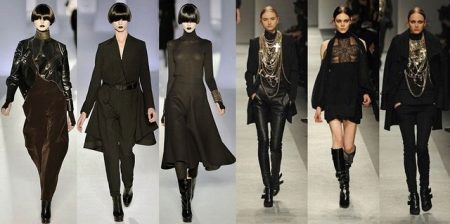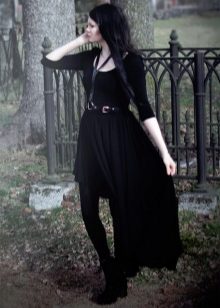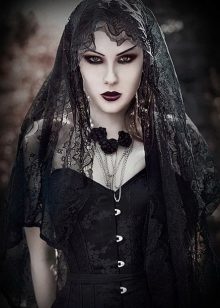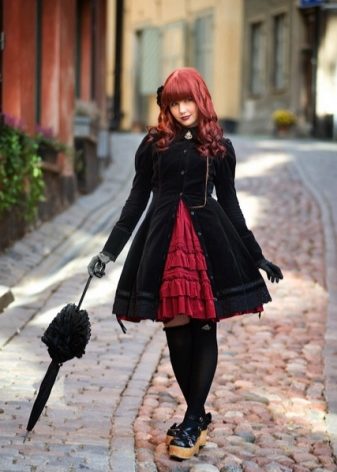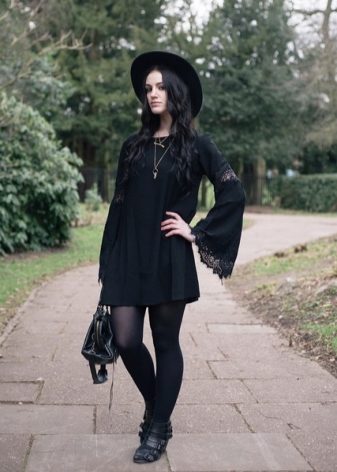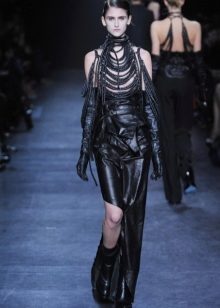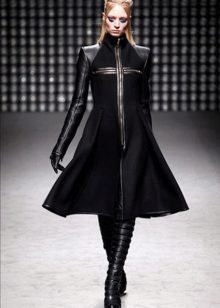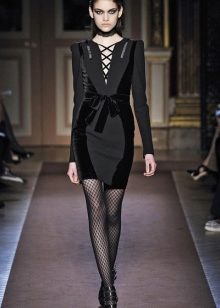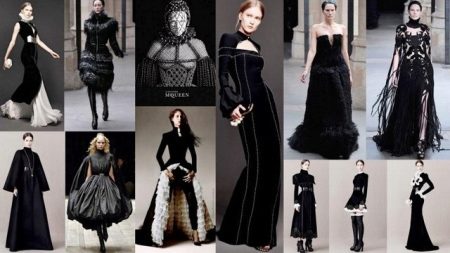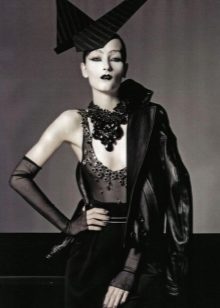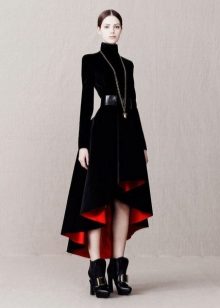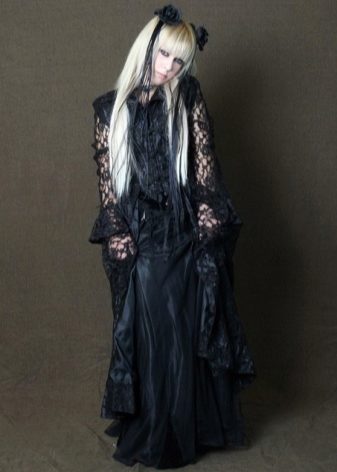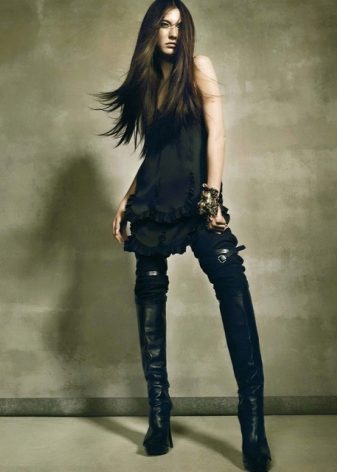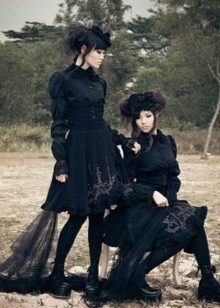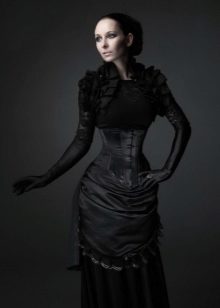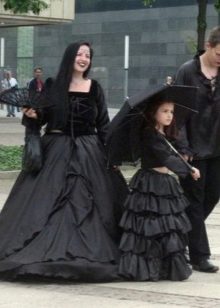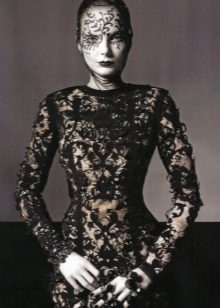Gothic style

The concept of "Gothic" means the direction in art that prevailed from the thirteenth to the fifteenth century. Initially, it is an architectural style and traveling around European countries, you can see a lot of historic buildings in this style. Its distinctive features are multi-colored stained glass windows, large openwork towers and a noticeable elongation of all structures. The interior design also has noticeable features of the Gothic style. He is characterized by greatness and grace. The characteristic features are openwork patterns, pointed arches, stone lace thread, and the main decoration is a stained-glass window - a rose. Dark and gloomy this style was nicknamed already in the Renaissance, which succeeded in the fifteenth century.
In the era of the Middle Ages
However, the Gothic style is present not only in architecture, interior design, but also in clothing. This style went among young guys and girls who are passionate about the subculture is ready. It should be noted that the style of clothing to which modern Goths are committed is significantly different from the clothing of medieval Europe. Gothic fascinates with its gloomy majesty, cold and severity. This style of clothing in the Middle Ages was born in France, and then spread throughout Europe.
Medieval style was characterized by a clear division into classes of feudal lords, peasants and citizens. Each outfit was characterized by contrasting differences depending on social status. The clothes of the feudal lords were made of silk with long loops. The main features were an elongated silhouette, and, therefore, sharp-nosed hats and the same shoes. The black color has not yet become fashionable, and mainly bright colors and different patterns with images of plants prevailed.
Clothing for women of the Middle Ages was also characterized by an elongated silhouette of the waist, a tight corset lace-up from the side or back. The bottom of the dress was completed with a wide skirt with a train. Its length depended on the social status of the ladies. Drapery on the skirt in the abdomen came into fashion. Cloaks were rounded and attached to the buckle in front. Mostly the edges of the clothes had a pointed shape.
Male costume in that era existed in two forms. The first option was a free cut and very long, the second, on the contrary, fitted the figure and was rather short. Short suits were mostly worn by boys. Gradually, a shortened jacket with narrowed sleeves comes into fashion, and in addition to it, began to wear pants in the form of stockings.
Men from a noble family also wore a similar suit, but it was distinguished by the shape of its sleeves. The narrow bodice was complemented by wider floors. The cloak model was very simple and was a piece of cloth with a hole for the head. Such a raincoat received the name - amice. This model is usually not sewn on the sides, but if it was stitched and there were holes for the arms, then such a cloak was called - surco. Similar models were in both long and short versions.
Revival style
The era of the Gothic style in clothes is replaced by the Renaissance and Renaissance. Gothic can be revived only for a short time in the late eighteenth and early nineteenth century. But this period will be very fleeting.
Gothic will manifest itself more vividly and brightly in the late seventies of the twentieth century. In our concept, the Gothic style is the style of a ready, youth subculture. From the images of the Middle Ages will remain only distant characteristics. The style will present a cold gloom, excessive severity, interest in mysticism. Modern clothing more closely resembles Gothic cathedrals, i.e. architectural direction.
Music and fashion have a huge impact on each other for a long time. So with the advent of a new trend in music — a chowk — a rock, the style gained a second wind.
By the early eighties of the twentieth century, formed its own Gothic style and fashion. The main characteristics of this trend so far are black color and volumetric accessories made of silver. Another distinctive feature is the style of applying makeup for both girls and young people - whitish powder and a thick layer of eyeliner on the eyes. All hair must be black.
The clothes are stylized for a period of short revival of style in the eighteenth and nineteenth century. Mandatory elements in modern clothes are long dresses in black, satin or leather gloves, an abundance of lace. The men in the wardrobe there are hats in the form of cylinders and tail coats.
Sometimes the clothes are ready to resemble metalworkers - a lot of leather clothes, chains and an abundance of metal jewelry. On modern Goths, you can see collars and bracelets with metal spikes, which serve as ornaments. Goths love to use a VAMP style in their make-up, which means red or black nail polish, black eye shadow and eyeliner.
Lovers of this style can be seen in the office. Mostly such people are distinguished by black clothes and the presence of inconspicuous metal ornaments.
Distinctive features in clothes
If you summarize all the special features of this style, it is possible to see the characteristic features of this direction.
- The predominance of clear lines in clothing.
- Clothing straight silhouette.
- The presence of dresses made of velvet, satin, taffeta, leather and brocade.
- The predominance of monochrome black clothes with the microscopic presence of burgundy, purple, blue and green colors.
- Varied length of skirts and dress. From ultrashort to maxi options.
- The presence of vintage items.
- Leather clothing in the form of pants and jackets - leather jacket.
- Black colored hair and emphasis on the eyes.
- What is the wardrobe of a modern goth.
A modern person doesn’t even have a question about how to dress, because the mass-market stores and show-rooms are replete with various textures and styles.
- Pants in tight leather or fabric. Such models are preferred by girls with perfect proportions.
- Corsets, perhaps, are classics of the genre, each self-respecting Goths. This piece of clothing perfectly emphasizes the waist, gives the image of sexuality and appeal. It is worn over a blouse or on a naked body.
- Lace dresses are a great outfit for a festive outing or special occasion. The length of such a dress can be absolutely any, but the waist and décolleté zone must necessarily be underlined.
- Everyone knows T-shirts with bones, skulls, crows or spiders. Every self-respecting goth has such a wardrobe item.
- Suits are perhaps the most standard option, consisting of a pencil skirt and a fitted jacket.
- Outerwear is a leather or fabric raincoats, flared to the bottom and with a large hood.
Favorite decorations of modern ready:
- Ornaments with spikes, chains and handcuffs. What can it be and bracelets, and collars.
- Figures of cats and dragons, as well as Egyptian crosses are depicted on rings, earrings and pendants.
- Black leather bags and backpacks with metal decorations in the form of skulls and spiders.
- Massive silver jewelery.
Categories ready
In the subculture itself, there are various subspecies and classes ready, which are markedly different from each other.
- Business. Such goths men and women wear a classic black suit and white shirt. It is very difficult to classify such people as subcultures and only black hair and characteristic accessories can give them away.
- Romance. In this direction, the main focus is on the gothic image of the 18th century, but in modern trends.
- Vampires.Appeared recently and began to gain fans, thanks to films about vampires. Often in clothes used red, which characterizes the blood.
- Cyber Classic black clothes are diluted with acid blotches. On the head, you can often see dreadlocks.
This style is quite interesting, but you can not embody it completely. Enough to use a couple of accents and any image will become more interesting.


